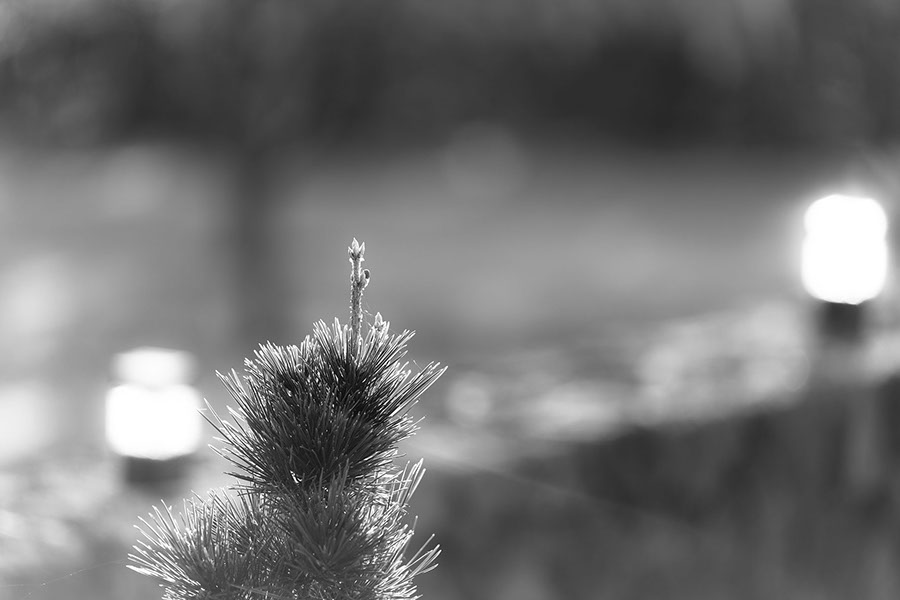Black pine. This will be the last shot with the 70-200 for a while. It's going out for repair. I had it partly packed, but remembered that the polarizing filter I have doesn't fit the closeup lens, and I wanted to experiment. The answer is that the polarizer doesn't make much difference in morning light, b/w. This is shooting almost into the sun, with no lens shade. So there's some flare, which was OK by me.
I don't know whether I'll switch back to color tomorrow, or not. I think what I'll do is to take it day by day, remembering that b/w can be fulfilling. I suppose that's actually a more difficult exercise -- deciding, each day, whether what I want to shoot will be more interesting in color or b/w.
And although back in August I said I was going to send the old DSLR out to be converted to infrared, I haven't done it. I'll try to remember to get that done. Occasionally I apply Lightroom's "infrared" filter, and sometimes I really like the results. Other times, it just looks as though I've had a total exposure failure. True infrared has a particular look that I like.
Somewhere in this house there are Kodak Infrared Ektachrome color slides, from the sixties. Maybe I'll scan a couple. True infrared color on vegetation is really interesting -- shades of red, not green. In doing fieldwork on Bougainville, I discovered that I could effectively map the distribution of sago palms using infrared from an airplane, because their crowns were the most vivid of all the reds. Yes, I actually went up in a Cessna 172 and had a pilot bank steeply so I could shoot out the window, using my 100% manual Nikon F with 100% manual lenses that had a small mark on the barrel, showing the infrared offset (infrared focuses at a different place than visible light does). And I had to estimate the exposure, using the f/16 rule. And it worked.
What's the f/16 rule, you ask? If every exposure meter fails, your exposure on a bright day will usually be correct at f/16 and a shutter speed that's closest to the ASA of your film. For other lighting conditions, adjust accordingly. These old rules really did work, and in the old manual days everybody knew how to judge the lightning (two stops down! three stops up!).
